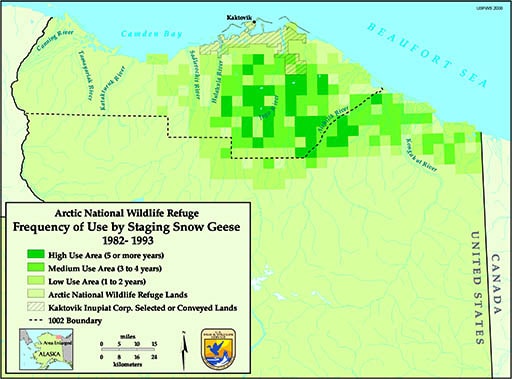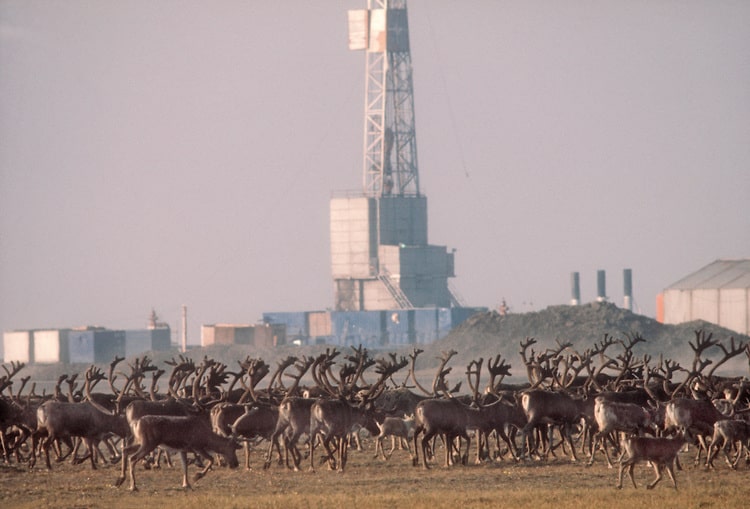
Plans for oil and gas development in the Arctic National Wildlife Refuge (ANWR) were approved on Monday, August 17. Secretary of the Interior, David L. Bernhardt signed off on the plans for 1.56 million acres of coastal lands to be leased to companies looking to extract oil and gas. The leases are required by law under the Tax Cuts and Jobs Act which was passed by Congress and signed into law by the President on December 22nd, 2017.
The Last Truly Wild Place
ANWR covers 19.6 million acres in northeastern Alaska and is an extremely diverse area in the Arctic. Caribou, Polar Bears, and Grey Wolves are some of the mammals that call ANWR home. Snow Geese and Sandhill Cranes are just two of over 200 bird species that migrate to the arctic refuge annually. According to the US Fish and Wildlife Service, ANWR is one of the last truly wild places on Earth.
Just offshore of Alaska’s North Slope is a unique body of water, the Arctic Basin. The Arctic Basin is the shallowest ocean basin on Earth. It is also the least salty due to slow evaporation rates and the large amounts of freshwater flowing from the Brooks Range into the sea. The extremely cold water is rich in minerals which allows microorganisms to thrive. The Arctic waters are home to many different whale species including Humpback, Blue, and Sperm whales.
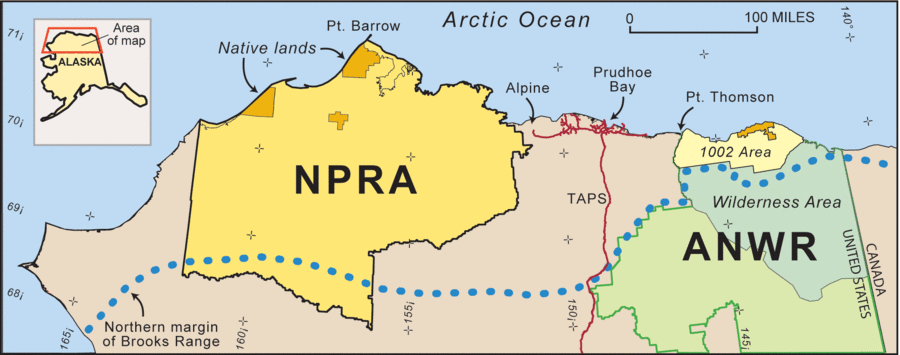
Relying on Fossil Fuels
Below the surface of ANWR lies a significant amount of oil and gas reserves. The North Slope contains the United States’ largest known oil reserve. Many people see these reserves as the key to America’s energy independence. The new area in ANWR now open to leases is estimated to contain between 4.3 and 11.8 billion barrels of technically recoverable oil. For comparison, the US currently produces about 3.9 million barrels a year.
While some see these new oil and gas leases as a boost to the economy, many worry about the protection of Alaska’s wildlands. There are extensive rules and regulations set in place to protect the area, but many people believe they are not adequate. As Alaska Senator Lisa Murkowski likes to point out, there will be environmental safeguards such as only driving across the tundra when it is frozen to minimize impact to the surrounding areas. Athan Manuel, a Sierra Club lobbyist says that measures like those Senator Murkowski promotes are not substantial enough.
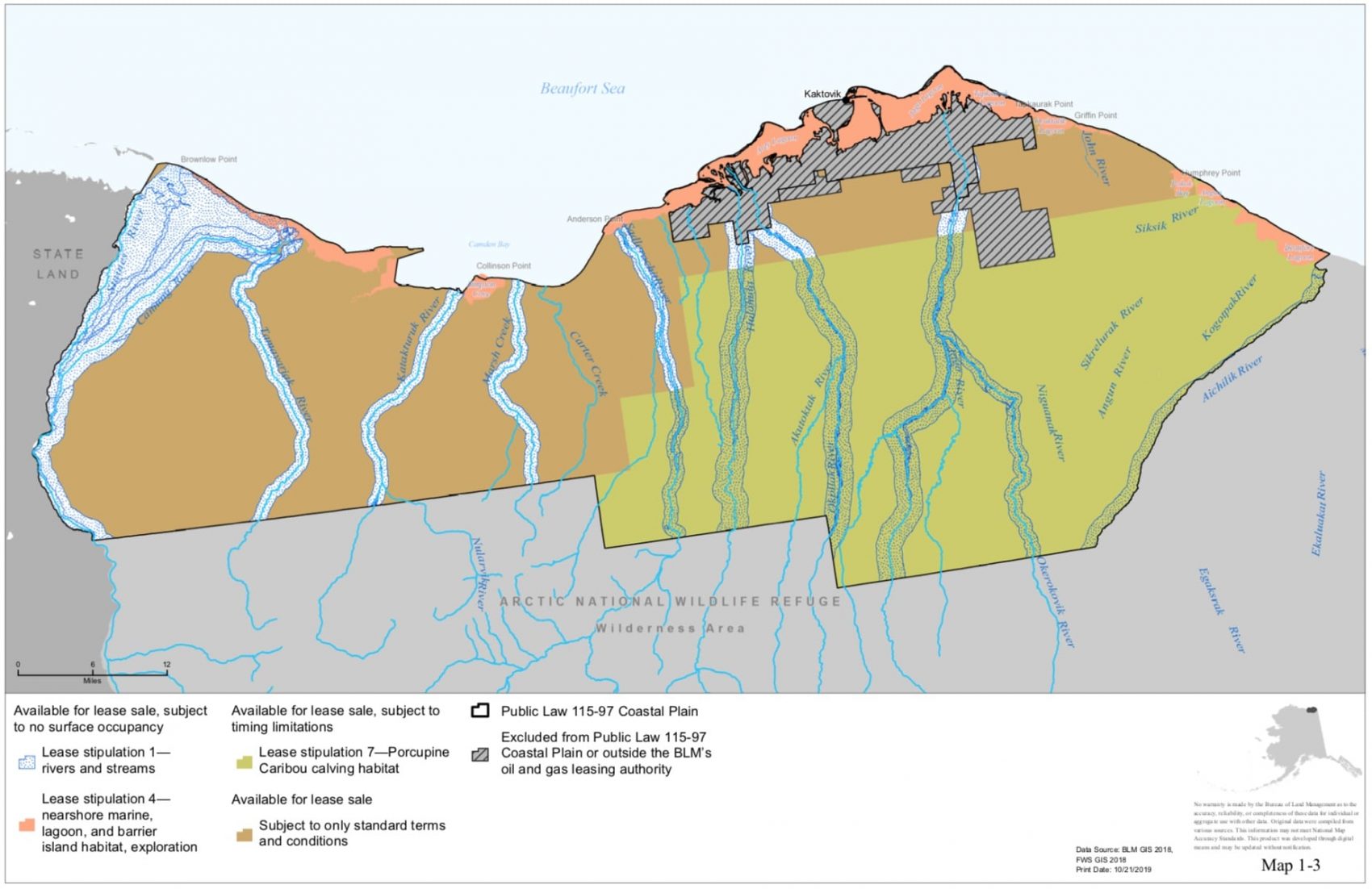
The Biological Heart of a Priceless Ecosystem
The environmental regulations are very strict for Alaska’s North Slope, however, they are not sufficient. Caribou rear their calves in area 1002–the new lease area. If they are driven to higher elevations due to oil development in the area they risk being preyed on in the high country. Similarly, Snow Geese nest in much of the area that is up for development which would disturb their breeding grounds. Offshore, noise from industrial activity, seismic oil exploration, and well drilling effects whales’ ability to migrate.
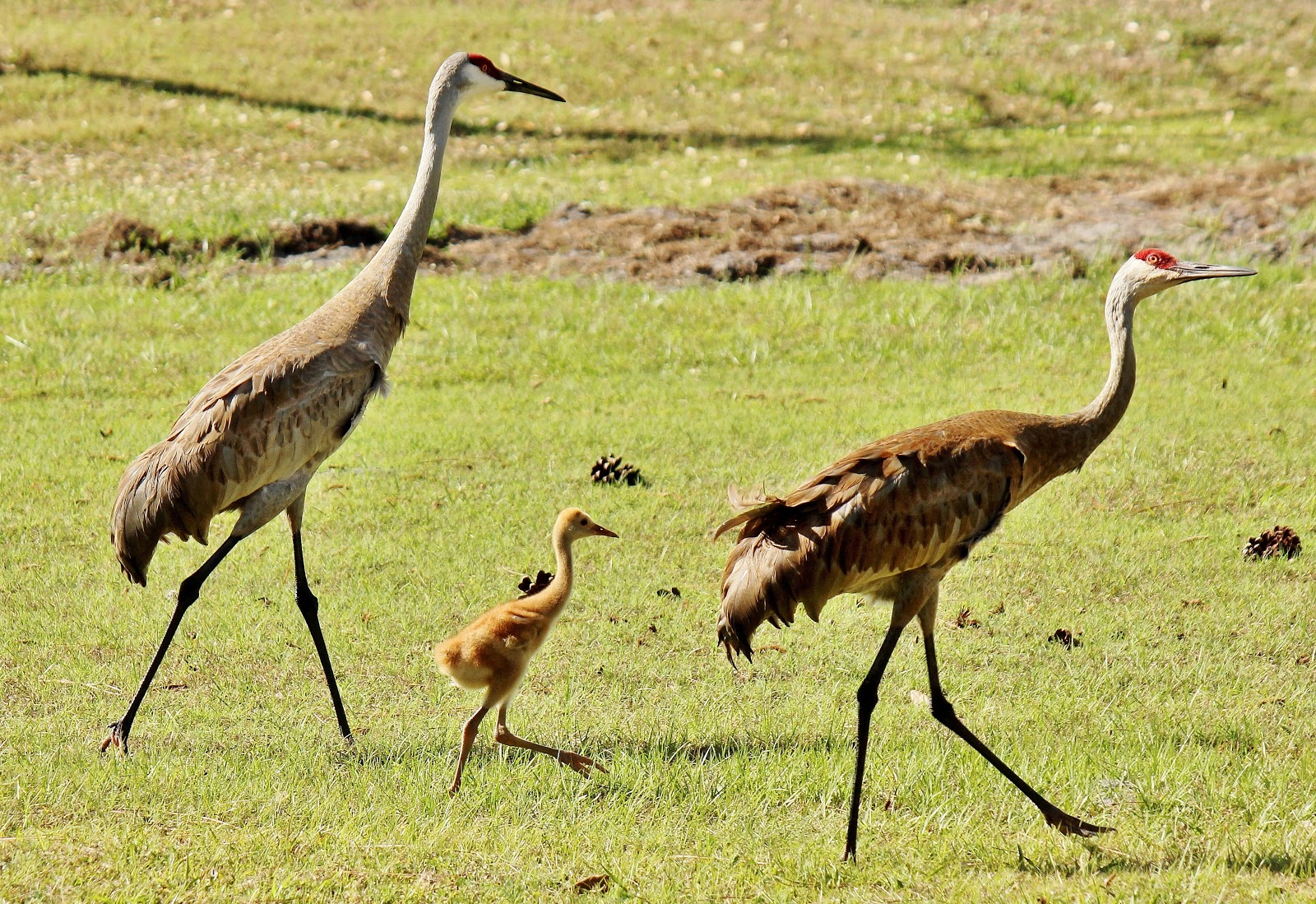
With oil and gas extraction comes the risk of a spill. Alaska is familiar with tragic oil spills having experienced the Exxon Valdez spill in 1989. Once oil spreads into the water, across the tundra, or into the sediment there is almost no chance of a full environmental restoration.
The best bet for the environment and a better economy is to leave the oil and gas in the ground. A transition to cleaner energy production would not only boost our economy but keep our Alaska wild. While the future of ANWR is uncertain, according to the new law the lease sales must be held within seven years. It is possible that the first lease sale will take place before December 22, 2021, and the second lease sale before December 22, 2024. With record low oil prices and many financial firms saying they will not loan money to companies who explore within ANWR it is unclear if the sales will go through.
